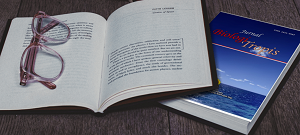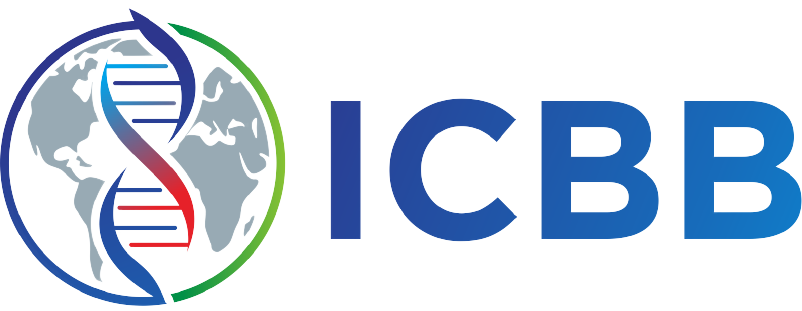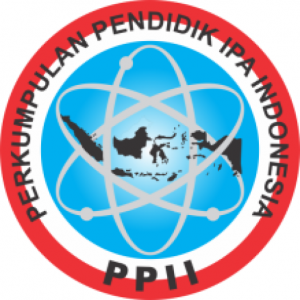Toxicity and Apoptosis Test of 96% Ethanol Extract of Agelas Cavernosa on Vero Cells
Authors
Khafid Mahbub , Siska Rusmalina , Anik Indriono , Mahfur Mahfur , Rixzal Azis Julian , Dina Achada Maulidya , Ika Vina Dika , Salis Alyatur RohmaniahDOI:
10.29303/jbt.v25i1.8262Published:
2025-01-21Issue:
Vol. 25 No. 1 (2025): Januari - MaretKeywords:
Agelas cavernosa, apoptosis, toxicity, vero cells.Articles
Downloads
How to Cite
Downloads
Metrics
Abstract
Agelas cavernosa sponge is a sponge from the Demospongiae class which includes 90% of all types of sponges. Agelas cavernosa sponge is known to have antibacterial activity. Research data on the toxicity and apoptosis test of Agelas cavernosa sponge on vero cells as far as researchers know has not been tested. The purpose of this study was to determine the toxicity and apoptosis of Agelas cavernosa ethanol extract. The research method was carried out using the MTT Assay method for toxicity testing and the flowsitometry method for apoptosis testing. Alkaloids, flavonoids, saponins, terpenoids, and polyphenols were all detected in the Agelas cavernosa ethanol extract, according to the results of phytochemical screening. The apoptosis test yielded vero cell viability of 82.2%, whereas the toxicity test yielded an LC50 value for vero cells of 197.84 ppm.
References
Aristyawan, D. A., Sugianto, N. E., & Suciati. (2017). Potensi Antibakteri dari Ekstrak Etanol Spons.pdf. In Jurnal Farmasi Dan Ilmu Kefarmasian Indonesia (Vol. 4, pp. 39–43).
Aslantürk, Ö., Çelik, T., Karabey, B., & Karabey, F. (2017). Active phytochemical detecting, antioxidant, cytotoxic, apoptotic activities of ethyl acetate and methanol extracts of Galium aparine L. British Journal of Pharmaceutical Research, 15(6), 1-16. https://doi.org/10.9734/BJPR/2017/32762
Bashari, M. H., Huda, F., Tartila, T. S., Shabrina, S., Putri, T., Qomarilla, N., Atmaja, H., Subhan, B., Sudji, I. R., dan Meiyanto, E. (2019). Bioactive Compounds in the Ethanol Extract of Marine Sponge Stylissa carteri Demonstrates Potential Anti-Cancer Activity in Breast Cancer Cells. Asian Pacific journal of cancer prevention : APJCP, 20(4), 1199–1206. https://doi.org/10.31557/APJCP.2019 .20.4.1199
Denatri, A. H., Maisaroh, D. S., Kartika, A. G. D., Susanti, O., & Munir, M. (2023). Antibacterial activities of the extracts of sponge Agelas cervicornis agains bacteria Staphylococcus aureus. Journal of Marine Resources and Coastal Management, 4(2), 1-6. 10.29080/mrcm.v4i2.1592. https://doi.org/10.29080/mrcm.v4i2.1592
Haryoto, Muhtadi, Indrayudha, P., Azizah, T., Suhendi, A., & Haryoto, Muhtadi, Peni Indrayudha, Tanti Azizah, A. S. (2013). Aktivitas Sitotoksik Ekstrak Etanol Tumbuhan Sala (Cynometra ramiflora Linn) Terhadap Sel HeLa, T47D dan WiDR. Jurnal Penelitian Saintek, 18, 21–28.
Jelita, S. F., Setyowati, G. W., & Ferdinand, M. (2020). Uji toksisitas infusa acalypha siamensis dengan metode brine shrimp lethality test (bslt). Farmaka, 18(1), 14-22.
Kalangit, R. B. (2024). Metode uji sitotoksisitas biomaterial dengan bentuk scaffold padatan dan berpori spons. Jurnal Kedokteran Gigi Terpadu, 6(1), 53-56. https://doi.org/10.25105/jkgt.v6i1.20886
Kurnianda, V., Ramadhan, M. R., Karina, S., Agustina, S., Ulfah, M., Octavina, C., Mardiah, A., Syahliza, F., & Purnawan, S. (2018). An indole alkaloid produced by Indonesian’s marine sponge Raspailia ramosa as an inhibitory of the panc-1 cell adapted to nutrient starvation. IOP Conference Series: Earth and Environmental Science, 216(1). https://doi.org/10.1088/17551315/216/1/012042
Kurniawan, M. R., Sapar, A., & Aritonang, A. B. (2021). Úji toksisitas dan uji fitokimia spons Haliclona sp. asal pulau lemukutan kabupaten bengkayang kalimantan barat. Jurnal Kimia Khatulistiwa, 9(1).
Mahbub, K., Walid, M. ., Mutiananda, F., & Fatoni, N. (2023). Formulasi Sediaan Mouthwash Ekstrak Daun Bakau (Rhizophora Apiculata Blum). Jurnal Farmasetis, 12(3), 277–284. https://doi.org/10.32583/far.v12i3.960
Meigaria, K. M., Mudianta, I. W., & Martiningsih, N. W. (2016). Skrining fitokimia dan uji aktivitas antioksidan ekstrak aseton daun kelor (Moringa oleifera). Wahana Matematika dan Sains: Jurnal Matematika, Sains, dan Pembelajarannya, 10(2), 1-11.
Meyer, B.N., Ferrigni, N.R., Putnam, J.E.Jacobsen, L.B., Nichols, D.E, And McLaughlin, J.L. (1982). Brine Shrimp : A Convenient General Bioassay for Active Plant Constituents. Planta Medica 45 (05): 31–34. 10.1055/s-2007-971236
Mosmann, T. (1983). Rapid colorimetric assay for cellular growth and survival: application to proliferation and cytotoxicity assays. Journal of immunological methods, 65(1-2), 55-63. https://doi.org/10.1016/00221759(83)90303-4
Tetti, M. (2014). Ekstraksi, pemisahan senyawa, dan identifikasi senyawa aktif. Jurnal Kesehatan, 7(2). https://doi.org/10.24252/kesehatan.v7i2.55
Putra, M. Y. (2023). Keanekaragaman Senyawa Bahan Alam dari Invertebrata Laut Indonesia dan Potensinya sebagai Bahan Baku Obat (1st ed.). Badan Riset dan Inovasi Nasional (BRIN), pp:7-8
Rieger, A. M., Nelson, K. L., Konowalchuk, J. D., & Barreda, D. R. (2011). Modified annexin V/propidium iodide apoptosis assay for accurate assessment of cell death. Journal of visualized experiments: JoVE, (50), 2597. https://doi.org/10.3791/2597
Senthilraja, P., & Kathiresan, K. (2015). In vitro cytotoxicity MTT assay in vero, HepG2 and MCF-7 cell lines study of marine yeast. Journal of Applied Pharmaceutical Science, 5(3), 80–84. https://doi.org/10.7324/JAPS.2015.50313
Shrestha, S., Sorolla, A., Fromont, J., Blancafort, P., & Flematti, G. R. (2018). Crambescidin 800, isolated from the marine sponge Monanchora viridis, induces cell cycle arrest and apoptosis in triple-negative breast cancer cells. Marine drugs, 16(2), 53. https://doi.org/10.3390/md1602005 3
Simaremare, eva susanty. (2014). Skrining Fitokimia Daun Gatal (Laportea decumana (roxb.) Wedd). Pharmacy, 11(01), 98–107.
Sondakh, R. M., Posangi, J., & Wowor, P. M. (2017). Uji Toksisitas Akut Ekstrak Spons Laut (Callyspongia aerizusa) terhadap Larva Artemia salina Leach dengan Metode Brine Shrimp Lethality Test. eBiomedik, 5(2). https://doi.org/10.35790/ebm.v5i2.18312
Swantara, M. D., Rita, W. S., & Sibarani, J. (2013). Potensi Antikanker Isolat Toksik Tiga Spons Indonesia. Indonesian Journal of Cancer, 7(4). https://doi.org/10.33371/ijoc.v7i4.311
Tang, J., Wu, W., Yang, F., Liu, L., Yang, Z., Liu, L., Tang, W., Sun, F., dan Lin, H. (2018). Marine sponge-derived smenospongine preferentially eliminates breast cancer stem-like cells via p38/AMPKα pathways. Cancer medicine, 7(8), 3965–3976. https://doi.org/10.1002/cam4.1640
Theodora, C. T., Gunawan, I. W. G., & Swantara, I. M. D. (2019). Isolasi dan identifikasi golongan flavonoid pada ekstrak etil asetat daun gedi (Abelmoschus manihot L.)'. Jurnal Kimia, 13(2), 131. https://doi.org/10.24843/JCHEM.2019.v13.i02.p02
Van Soest, R. W. M. (1989). The Indonesian sponge fauna: A status report. Netherlands Journal of Sea Research, 23(2), 223–230. https://doi.org/10.1016/0077-7579(89)90016-1
Vermes, I., Haanen, C., & Reutelingsperger, C. (2000). Flow cytometry of apoptotic cell death. Journal of immunological methods, 243(1-2), 167-190. https://doi.org/10.1016/S0022-1759(00)00233-7
Wirmandiyanthi, K. D., Manurung, M., & Swantara, I. M. D. (2013). Uji Toksisitas Dan Identifikasi Ekstrak Spons Haliclona fascigera Terhadap Larva Aritemia salina L. Cakra Kimia, 1(1), 20–25
License
Copyright (c) 2025 Khafid Mahbub, Siska Rusmalina, Anik Indriono, Mahfur Mahfur, Rixzal Azis Julian, Dina Achada Maulidya, Ika Vina Dika, Salis Alyatur Rohmaniah

This work is licensed under a Creative Commons Attribution 4.0 International License.

Jurnal Biologi Tropis is licensed under a Creative Commons Attribution 4.0 International License.
The copyright of the received article shall be assigned to the author as the owner of the paper. The intended copyright includes the right to publish the article in various forms (including reprints). The journal maintains the publishing rights to the published articles.
Authors are permitted to disseminate published articles by sharing the link/DOI of the article at the journal. Authors are allowed to use their articles for any legal purposes deemed necessary without written permission from the journal with an acknowledgment of initial publication to this journal.


























